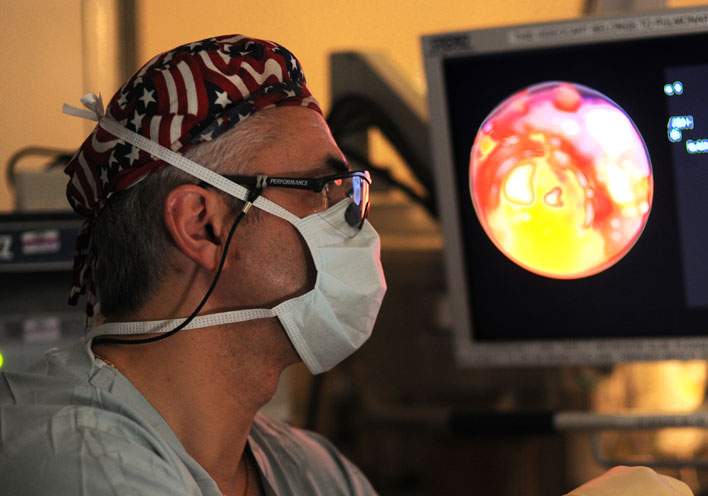What to Expect During a Bronchoscopy
A bronchoscopy allows doctors to examine the inside of your lungs, without incisions or surgery.
Founded in 1982, our IP program is one of the most experienced in the U.S. We offer advanced diagnostic procedures to treat chest and airway conditions without surgery. Henry Ford has committed fully to this service, operating one of the largest, most advanced procedure suites in the U.S.
Henry Ford’s bronchoscopy suite provides state-of-the-art technology in our well-equipped procedure rooms. Here, our team of experienced interventional pulmonologists performs highly complex diagnostic and multidisciplinary treatments for lung cancer, sarcoidosis, pulmonary fibrosis and other lung diseases.
Our bronchoscopy suite includes two large procedure rooms and one smaller room for pleural procedures. When you arrive for a procedure, you can use valet parking conveniently located at the west entrance and then take the elevators to the 4th floor. During a procedure, your loved ones can wait nearby.
We combine quality and safety with the most advanced technologies to provide each patient the best possible treatment plan for recovery and quality of life. We offer every means of diagnosis and treatment because every problem — like every patient — is different. Above all, we offer hope.
As the only fully comprehensive IP program in Michigan, we diagnose and treat lung and airway problems, including lung cancer. We also diagnose and treat infections and injuries to the pleura (the thin layer of tissue that surrounds the lungs). Get more information about interventional pulmonology.
Our services include:
We diagnose the cause and type of a lung condition using bronchoscopes. These scopes are long and thin, with a light and camera that allow pulmonologists to view inside the lung. Your lungs have more than 1,400 miles of airways. To diagnose and help treat disease, we pair the bronchoscope with tools such as:
We treat benign (non-cancerous) and malignant disease (including lung cancer and tumors from other cancers, like breast cancer, that spread to the airways and lungs).
Imagine that your chest is a box, and your lungs are balloons in that box. The pleura is the space between the balloons and the inside of the box. We treat benign or malignant disease in the pleura using techniques like thoracentesis, indwelling catheters or thoracoscopy. Get more information about treatments for pleural disease.
Call our Interventional Pulmonology team at (313) 916-4406.

A bronchoscopy allows doctors to examine the inside of your lungs, without incisions or surgery.
We use cookies to improve your website experience. By using this site, you agree to our Terms of Use. Read our Internet Privacy Statement to learn what information we collect and how we use it.